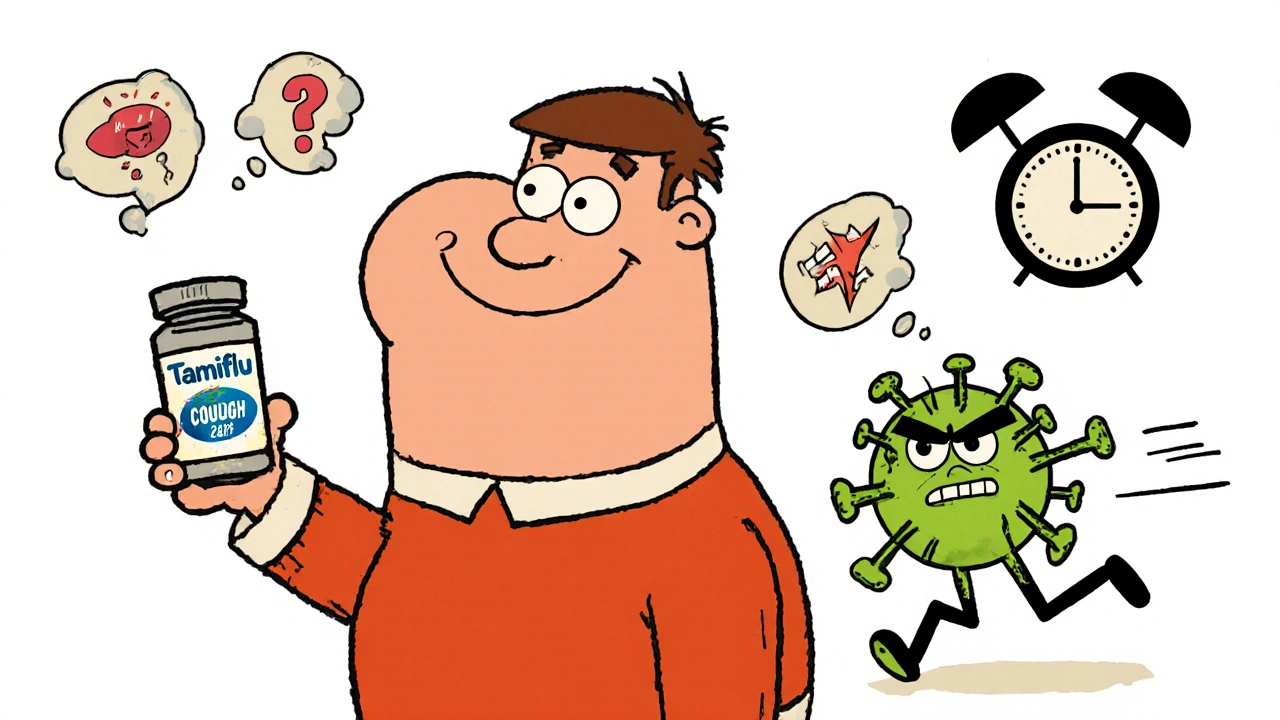Oseltamivir: What It Is, How It Works, and What You Need to Know
When the flu hits hard, oseltamivir, a prescription antiviral drug used to treat and prevent influenza. Also known as Tamiflu, it works by stopping the flu virus from spreading inside your body. Unlike antibiotics, which fight bacteria, oseltamivir targets viruses—specifically influenza A and B. If you take it within 48 hours of symptoms starting, it can shorten your illness by a day or two and reduce the risk of serious complications like pneumonia.
It’s not a magic cure, but for high-risk people—like older adults, pregnant women, or those with asthma or heart disease—it can make a real difference. Many users report feeling less dizzy, less achy, and less exhausted sooner. The drug doesn’t kill the virus outright; it blocks a protein called neuraminidase that the flu needs to copy itself. Think of it like jamming the gears in a machine so it can’t keep running. That’s why timing matters: the sooner you start, the less damage the virus can do.
Side effects are usually mild—nausea, vomiting, or a headache—but they’re common enough that doctors often recommend taking it with food. Some people worry about behavioral changes, especially in kids, but studies from the CDC and WHO show these are rare and often linked to the flu itself, not the drug. Still, if you or someone you care for feels unusually confused or agitated after taking it, call your doctor. It’s not normal, and it needs checking.
Oseltamivir isn’t just for treating the flu—it’s also used to prevent it. If someone in your house gets sick, your doctor might prescribe it to others to keep the virus from spreading. This is especially helpful in nursing homes, schools, or hospitals where flu can sweep through quickly. You don’t need to be sick to take it preventively, but you do need a prescription. Over-the-counter flu remedies won’t do the same job. They might ease symptoms, but only oseltamivir slows the virus down at its source.
There’s a reason this drug shows up in pandemic prep plans: it’s one of the few antivirals proven to work against multiple flu strains. It’s not perfect—some strains have developed resistance—but it’s still a frontline tool. If you’ve ever wondered why your doctor pushes you to start it fast, now you know. It’s not about feeling better tomorrow—it’s about stopping the virus before it takes hold.
Below, you’ll find real stories and facts from people who’ve used oseltamivir, whether they were fighting the flu, protecting their family, or managing side effects. These aren’t ads or generic advice. They’re experiences that match what you’re going through right now.




